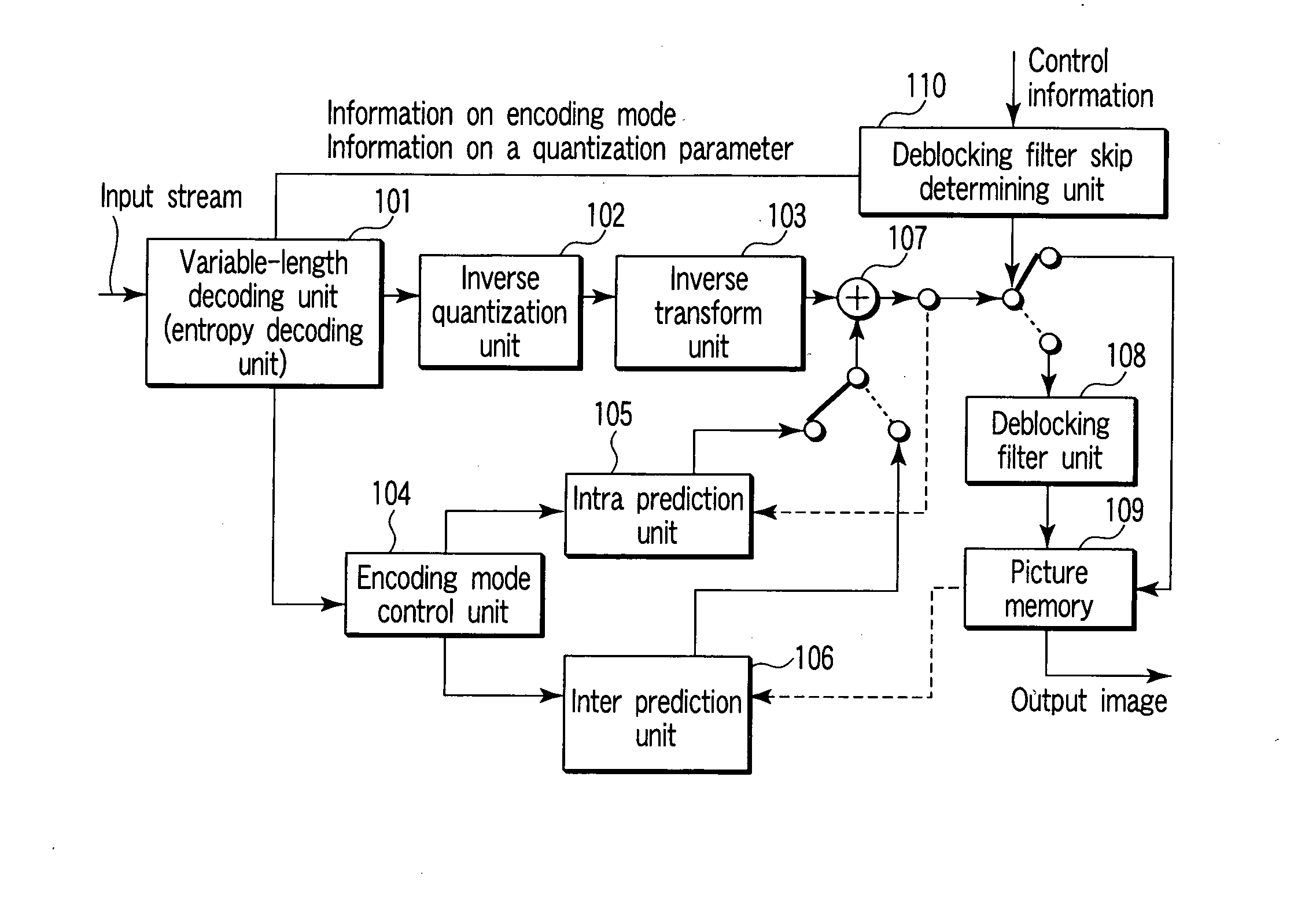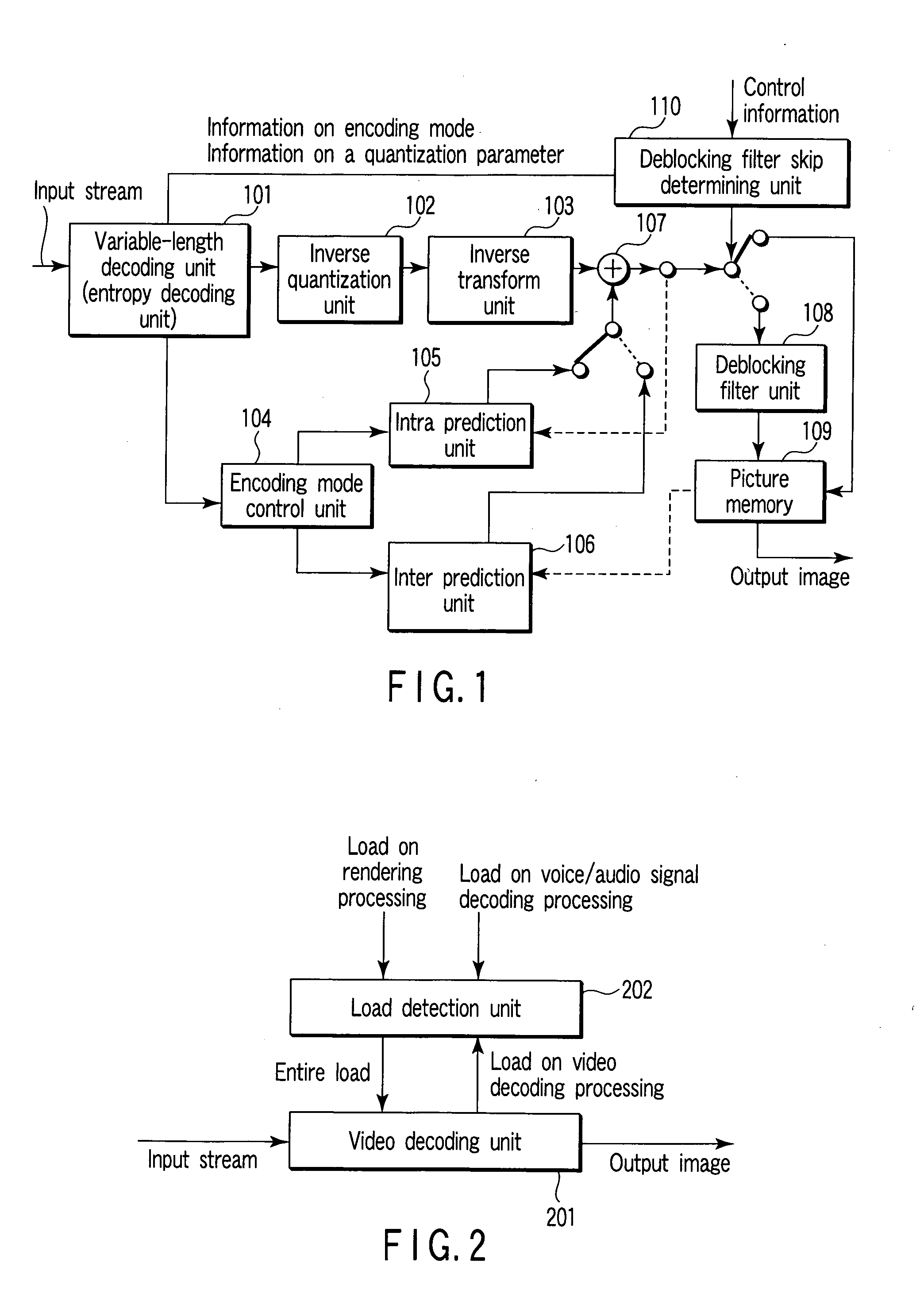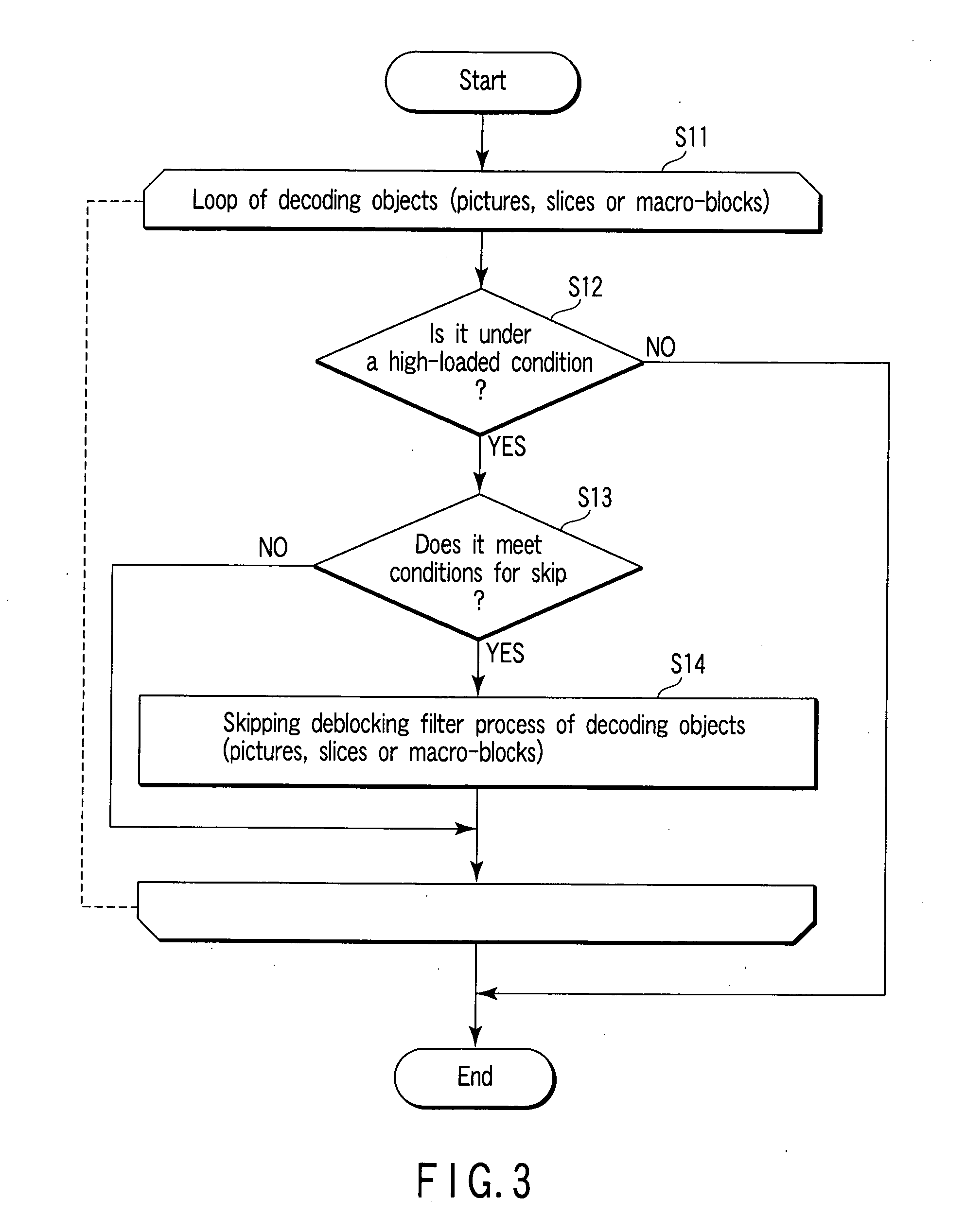Video decoding apparatus and video decoding method
a video decoding and video decoding technology, applied in the field of video decoding apparatus and video decoding method, can solve the problems of inability to achieve real-time decoding processing and extremely slow movement of objects
- Summary
- Abstract
- Description
- Claims
- Application Information
AI Technical Summary
Problems solved by technology
Method used
Image
Examples
first embodiment
[0067]FIG. 5 is a flowchart showing a processing example in a case of the pattern 3 in skip determination by information on a quantization parameter described above, as a first embodiment. In this embodiment, a skip range of filter process is set to be a loop in units of slices (step S31). Next, it is determined whether or not the processing is under a high-loaded condition (step S32), and when the processing is under a high-loaded condition, a quantization parameter of a slice serving as a decoding object is set as a central value (step S33), and (an average value of quantization parameters of decoded slices)+a constant (an offset value) is set as a threshold value (step S34), and it is determined whether or not the central value is less than the threshold value (step S35). When the central value is less than the threshold value, processing is skipped deblocking filter process of the slice serving as a decoding object (step S36), and a quantization parameter of the slice serving as...
second embodiment
[0068]FIG. 6 is a flowchart showing a processing example in a case of the pattern 2 in skip determination by information on a quantization parameter described above, as a second embodiment. In this embodiment, a skip range of filter process is set to be a loop in units of pictures (step S41). Next, it is determined whether or not the processing is under a high-loaded condition (step S42), and when the processing is under a high-loaded condition, (an average value of quantization parameters of macro-blocks belonging to a picture serving as a decoding object) is set as a central value (step S43), and a constant is set as a threshold value (step S44), and it is determined whether or not the central value is less than the threshold value (step S45). When the central value is less than the threshold value, processing is skipped deblocking filter process of the picture serving as a decoding object (step S46). When it is determined that the central value is not less than the threshold valu...
third embodiment
[0069]FIG. 7 is a flowchart showing a processing example in a case of the pattern 1 of the third method in skip determination by information on an encoding mode described above, as a third embodiment. In this embodiment, a skip range of filter process is set to be a loop in units of slices (step S51). Next, it is determined whether or not the processing is under a high-loaded condition (step S52), and when the processing is under a high-loaded condition, it is determined whether or nor an decoding object is a B slice (step S53), and when the decoding object is a B slice, processing is skipped deblocking filter process of the slice serving as a decoding object (step S54), and the routine proceeds to skip determination for the following slice unit. When it is determined that the decoding object is not a B slice at step S53, the processing at step S54 is passed. Further, when it is determined that the processing is not under a high-loaded condition at the step S52, processing is carrie...
PUM
 Login to View More
Login to View More Abstract
Description
Claims
Application Information
 Login to View More
Login to View More - R&D
- Intellectual Property
- Life Sciences
- Materials
- Tech Scout
- Unparalleled Data Quality
- Higher Quality Content
- 60% Fewer Hallucinations
Browse by: Latest US Patents, China's latest patents, Technical Efficacy Thesaurus, Application Domain, Technology Topic, Popular Technical Reports.
© 2025 PatSnap. All rights reserved.Legal|Privacy policy|Modern Slavery Act Transparency Statement|Sitemap|About US| Contact US: help@patsnap.com



